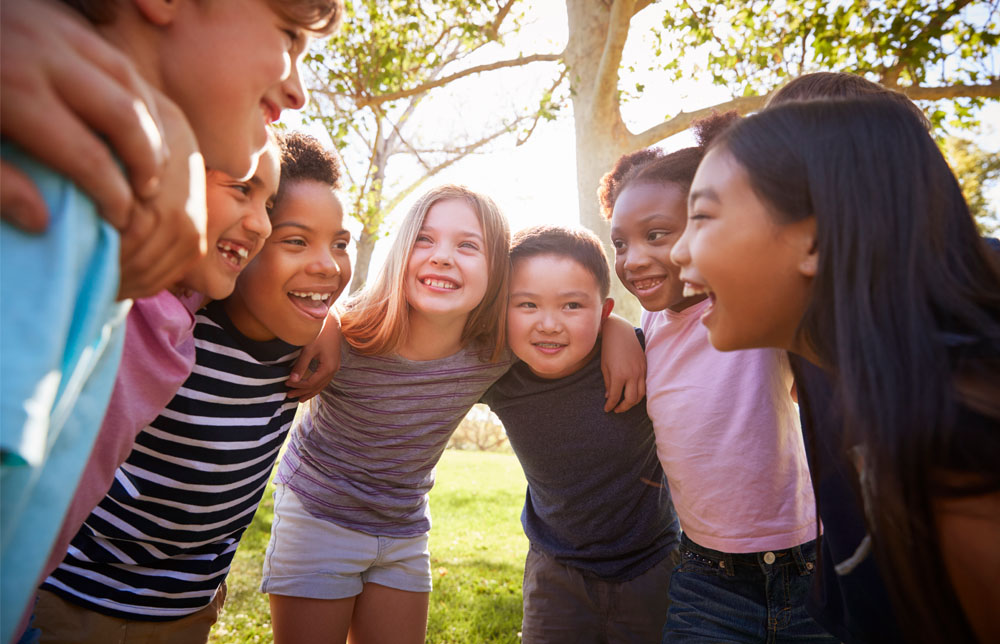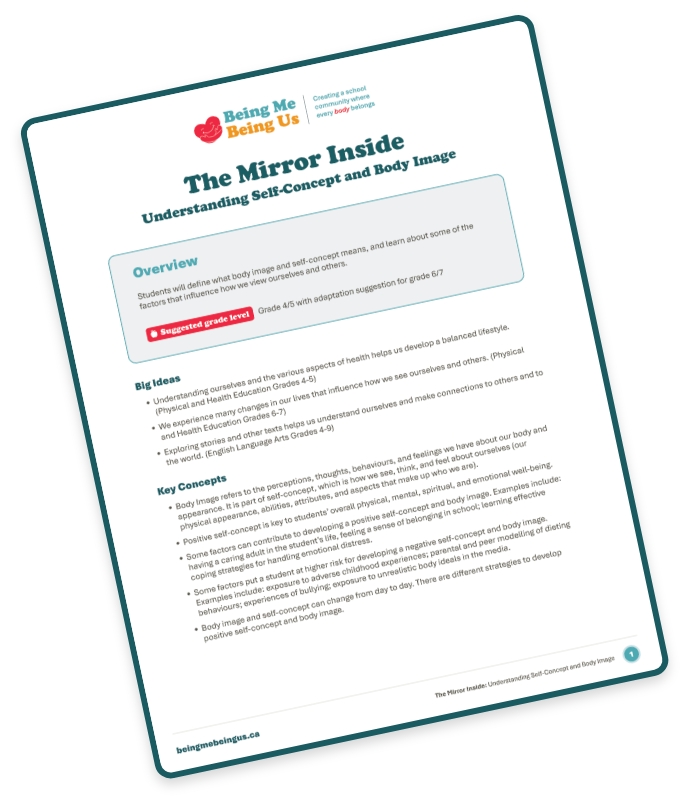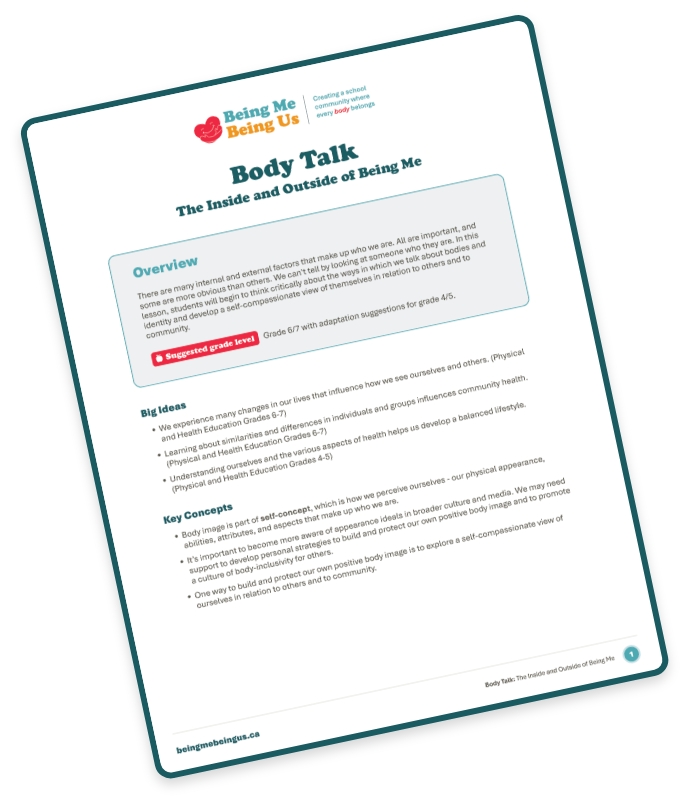Increasing Self-Awareness and Knowledge About Body Image and Self-Concept
We all have biases about bodies, weight, and food choices because of the many messages we have received throughout our lives from society, family members, friends, peers, mentors, and the media. These biases may be inaccurate or oversimplify complex processes, and they may contribute to our own body image perspectives as adults.
Body image is complex and impacted by numerous biological, psychological, social factors. Teachers are in a unique position to have influence on the protective factors in a child’s life. If you have struggled with your own body image, consider talking with a mental health professional or taking steps to improve your relationship with your body.
Everyone deserves to feel that their body is welcome at school. Here are some strategies for increasing self-awareness about body image and self-concept, and contributing to a more body-inclusive community





